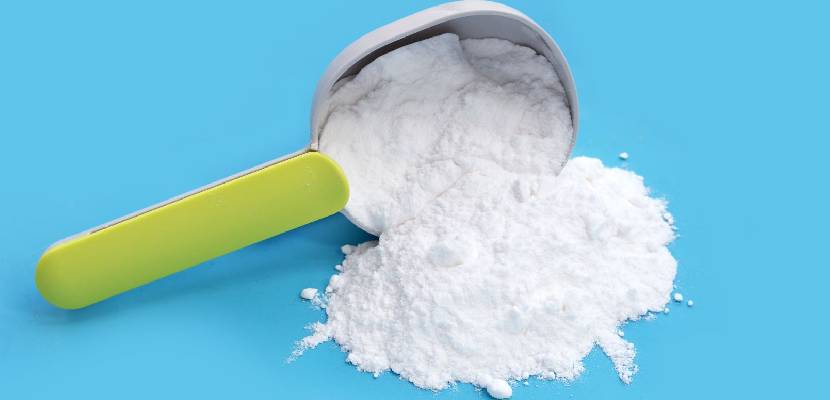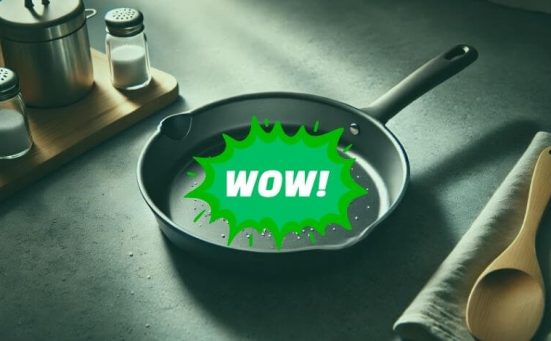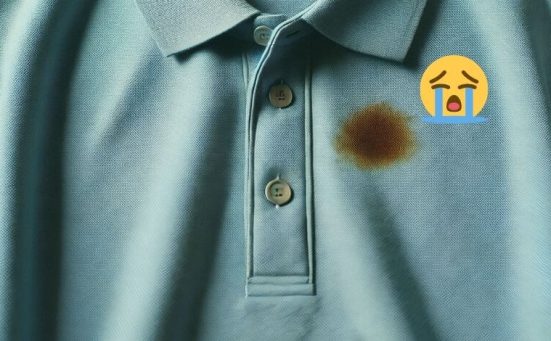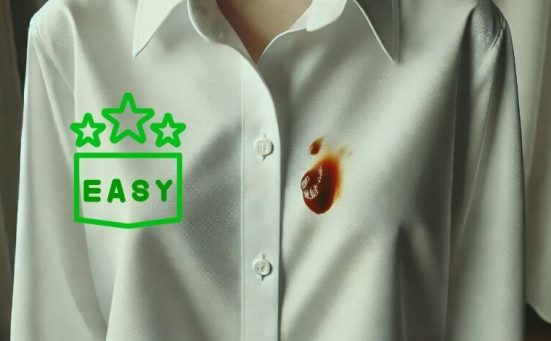
Butter on Your Favourite Top? This Hack Can Save It
You know that moment when you’re spreading butter on your morning toast and somehow end up with a greasy splodge right down the front of your clean shirt? It happens to the best of us, usually when we’re already running late or heading somewhere important.
The good news is that butter stains aren’t nearly as permanent as they look. What seems like a clothing disaster can actually be sorted quite easily with the right approach and some basic household items. These simple techniques work on most fabrics and don’t require any expensive products.
If you’re someone who constantly finds themselves cleaning up spills and stains, or you live with people who seem to attract food accidents, these methods will genuinely save you money and stress. No more throwing away perfectly good clothes or frantically searching for something else to wear.
Why Butter Makes Such A Mess Of Your Clothes
Understanding what you’re dealing with makes the cleaning process much more straightforward.
Butter is essentially pure fat, which behaves very differently from other types of stains. When it hits fabric, it soaks right into the fibres and creates an oily residue that water alone can’t shift. This is why throwing a butter stained item straight into the wash rarely works.
Timing really matters here. Fresh stains are always easier to tackle than ones that have been sitting around for hours or days. But don’t worry if you’re dealing with an older stain, these methods can still be surprisingly effective.
And, temperature is important too. Using hot water too early can actually make the stain worse by setting it into the fabric. We’ll start with cooler temperatures and work our way up.
What You Need To Remove Butter Stains
The beauty of these methods is that they use everyday items you probably already have at home.
Gather These Items:
- Liquid washing up detergent (any brand works)
- Bicarbonate of soda
- Biological washing powder or liquid
- A blunt knife or spoon
- Clean cloths or kitchen roll
There are three different approaches depending on what type of fabric you’re working with and how stubborn the stain turns out to be.
Option One: The Washing Up Liquid Method
This works well for most everyday fabrics like cotton shirts, jeans, and clothing blends.
Remove What You Can
Use a knife or spoon to gently scrape away any solid butter without pushing it further into the fabric. Work from the outside of the stain inwards to avoid spreading it.
Blot with kitchen roll to absorb any liquid butter. Don’t rub or wipe as this just spreads the grease around.
Apply The Detergent
Put a few drops of washing up liquid directly onto the stain. The grease cutting ingredients in washing up liquid make it perfect for tackling butter stains on clothes.
Leave it for about 10 minutes to give the detergent time to break down the oils. You can work it in gently with your fingers if the fabric can handle it.
Rinse And Wash
Rinse the area thoroughly with cool water, then wash the item in your machine using the hottest temperature the care label allows.
Check the stain has gone before putting it in the tumble dryer because heat can set any remaining grease permanently.
Option Two: The Bicarbonate Of Soda Approach
This gentler method works brilliantly for delicate fabrics or when you want a completely hands off approach.
Cover The Stain Completely
Sprinkle enough bicarbonate of soda over the stain to cover it entirely. The powder acts like a sponge, gradually absorbing the oils from the fabric.

Let it sit for several hours or overnight. The longer you leave it, the more grease it will absorb. Even an hour or two can make a noticeable difference.
Brush Off And Wash
Remove all the powder (you’ll be surprised how much oil it’s absorbed) and wash the garment normally.
This method also works well on carpets and furniture. Just vacuum up the powder when it’s done its job.
Option Three: The Pre Wash Soak
When you’re dealing with multiple stains or a particularly large butter disaster, sometimes soaking the whole item is the most practical approach.
Make Your Soaking Solution
Fill a bowl or sink with warm water and add 2 to 3 tablespoons of biological washing powder. The enzymes in biological detergents are specifically designed to break down fats and proteins.
Soak The Item
Put the whole garment in the solution and make sure it’s completely covered for 15 to 20 minutes. Keep it submerged by weighing it down with something clean if it keeps floating.
Wash As Normal
After soaking, put it straight into a regular wash cycle. This approach works particularly well for things like aprons, tea towels, and children’s clothes that tend to collect multiple food stains.
Adjusting Your Approach For Different Fabrics
Different materials need slightly different handling for the best results.
Cotton And Everyday Fabrics
These sturdy materials can handle all three methods and respond well to hot water washing. Feel free to use a bit of gentle scrubbing if needed.
Delicate Materials
Silk, wool, and other precious fabrics should stick to the bicarbonate of soda method only. Use cool water throughout and consider professional cleaning for expensive items.
Synthetic Blends
Most polyester and cotton mix fabrics work well with the washing up liquid approach. Just check the care label for any temperature restrictions.
When To Seek Professional Help
Sometimes it’s worth getting expert help rather than risking damage to special items.
Consider professional cleaning for:
- Expensive suits or formal wear
- Items marked “dry clean only”
- Stains that have already been through the dryer
- Vintage or very delicate fabrics
Professional cleaners have access to specialist products and techniques that can handle even seemingly impossible stains.
Keep Your Clothes Safe From Kitchen Accidents
Butter stains don’t have to mean the end of your favourite clothes. With these three reliable methods, you can handle most greasy accidents without expensive stain removers or replacement outfits.
The key is choosing the right approach for your fabric type and getting started as soon as possible after the accident happens. Most butter stains will come out completely when treated properly, saving you both money and frustration.
Next time someone in your household has a buttery breakfast disaster, you’ll know exactly what to do! These techniques are definitely worth sharing with anyone else who’s tired of losing good clothes to cooking accidents.
SEE ALSO: Ant Problem? This Quick Fix Will Keep Them Away for Good!
Also, follow us on Pinterest ...



